
Courtesy: Daily Rising Kashmir dt Feb., 24th, 2010 by Shahjahan Afzal(Kunan-Poshpora) Kupwara, Feb 23: From a distance Shah Begum (name changed) looks like any other inconsolable survivor of Kashmir turmoil. But when one approaches her and tries to talk to her, the pain within her simply erupts.
The pain of a trauma that was unleashed by the drunken troopers of Rajput Rifles exactly 19 years ago on village Kunan-Poshpora, 114 km north of Srinagar and some 10 km from Kupwara district headquarters.
Shah is seated on the verandah of her house, combing the hairs of her handicapped daughter, who is said to have lost her limb after she jumped from the first floor of the old house to save her chastity from the clenches of drunken troopers on that fateful night, the night intervening February 23-24, 1991.
When approached, she unfolds the trauma to yet another woman, this time round a social worker accompanying this reporter.
“First it was Nas…, then Jan… and finally it was the turn of Sha…,” Shah begins but stops shifts to hysterical screams.
Already in the autumn of her life, Shah (70) would easily qualify as one of the worst-hit survivors of the ghastly incident that has shaken the psyche of not just Kunan-Poshpora but all Kashmiris for almost two decades now.
Dozens of women reported that they were gangraped by the troops that night. “The government has shelved the case after ordering an inquiry, which rather bruised the character of the victims,” says Ishaq, a local.
Nineteen years after the gory incident, no one seems willing to reopen the old wounds, this elderly survivor being the only exception. Shah, then 52, told the lady social worker that she resisted "them" till her worn-out muscles gave way. “I resisted them for nearly 15 minutes,” she told the visitor. Shah, according to her relatives, isolated herself for a long time after the incident. She preferred to stay away from hordes of visiting journalists during her self-imposed confinement in a dingy room of her shabby house. She is now in her 70s but still eager to see "the rapists behind the bars".
Another victim, who is scared of looking into the mirror eversince the incident, remained mum. According to villagers, she loses her nerves the moment a mirror comes in sight.
Apart from the trauma, the people of the area face problems on all fronts, including social, economic, development and also on educational front. This, the villagers say, mocks at the tall claims of government and the NGOs of raising lots of funds for the "overall upliftment" of the tragedy survivors here, thereby misleading the international community.
Most of the people are still residing here in ordinary houses, with most of the local youth working as labourers or doing other menial jobs.
Kunan-Poshpora village is flood-prone and each year the whole area is inundated by the swollen Nallah Kahmil, flowing alongside the village. Villagers accuse that no measures have been taken by the government or any other agency to help the affected.
The only Middle school here has not been upgraded since and local children have to tread miles to attend their high and higher secondary classes. This is said to be the main factor responsible for the educational backwardness of the people here.
People are still reluctant to send their wards outside the village, fearing social stigma and a scare of another 1991-like tragedy.
Nineteen years hence, whenever journalists and social activists frequent the Kunan-Poshpora hamlet to assess the present situation, an eerie silence greets them. People are out on their usual assignments, not uttering a word and afraid of speaking openly. Perhaps disappointed by one and all, they now feel it better to bury the scars of the tragedy deep in their hearts.
But Farooq Ahmad, a senior citizen, expresses surprise over the "silence" maintained by the human rights agencies in India. He terms the silence of these agencies as "biased and criminal" and urges immediate reopening of the case.
Says a local youth, "I was thrice interrogated by troops for raising voice against the incident." According to Bashir A Chogly, a local social worker, “Some usual hue and cry was made but no serious efforts were made to gauge the severity of the insulting incident.”
Salt To Injury
The mass rape had evoked strong resentment, sparking massive protests and condemnations for weeks together from different corners of the world and Kashmir, in particular. Public anger forced the government to register a case and order a probe. But the case was hushed up.
On the request of Indian army, the probe held by then Chairman Press Council of India, bailed out the troops and sprinkled "salt on the wounds" of Kashmiris by instead castigating the character of the victims.
The report, said to have been compiled in some army camp in Pattan area of Kashmir, threw to winds the final report of then Deputy Commissioner Kupwara S M Yasin, who visited the village on March 7, 1991 to investigate. In his report, Yasin stated that the soldiers "behaved like wild beasts ... gang raped 23 ladies, without any consideration of age, married, unmarried, pregnancy etc…."










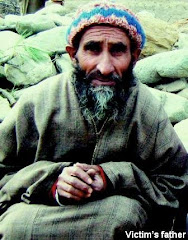



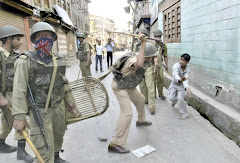


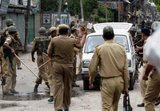



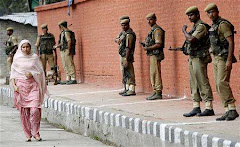







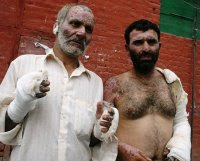






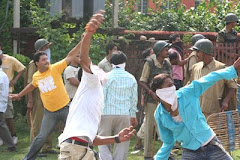

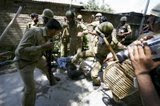




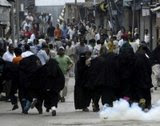







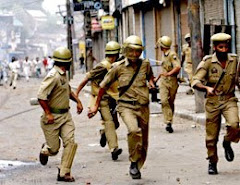
Only a fanatic like u can talk this way .......
ReplyDeleteThe true beauty of Kashmir
The real beauty that is found, and confirmed time and again by all tourists and visitors who travel to Kashmir, are the Kashmiri people. It is unquestionable the beauty and hospitality visitors experience during their stay stems from the hospitality given to them by the Kashmiri people. The golden bargaining chip the Kashmiri people possess are themselves. In no other place can you find a people who are so genuine and kind once you are able to break the battle hardened truth people must face on a daily basis. You will never taste better food, enjoy any comfort, hospitality or a desire to make sure that a guest is left with a feeling that if there is one thing they must do over the course of his or hers life, it’s to come back to Kashmir and visit these people again. It is not the mountains, the gardens, Dal Lake or undeniably beautiful handcrafted artisan goods. It is the people and will remain the people of Kashmir who are truly the greatest asset to be found in this mountainous region. and u talk of torturing n raping these people !!! sad very sad
TERRORISTS OR NO TERRORISTS....NOBODY HAS THE RIGHT TO RAPE INNOCENT WOMEN AND GIRLS...SHAME ON YOU FOR TRYING TO JUSTIFY WHAT THE ARMYMEN DID...
ReplyDeleteAnonymous said..
ReplyDeleteThis is what you think Kashmiri women should be treated as .India is talking about women empowerment is this what they mean by it ,now we need to understand the meaning of the terms in their way otherwise it would be proven disastrous as they SAY SOMETHING AND MEAN SOMETHING.
if she would be your mother or sister then what would be your views on that mr anonymous
ReplyDelete